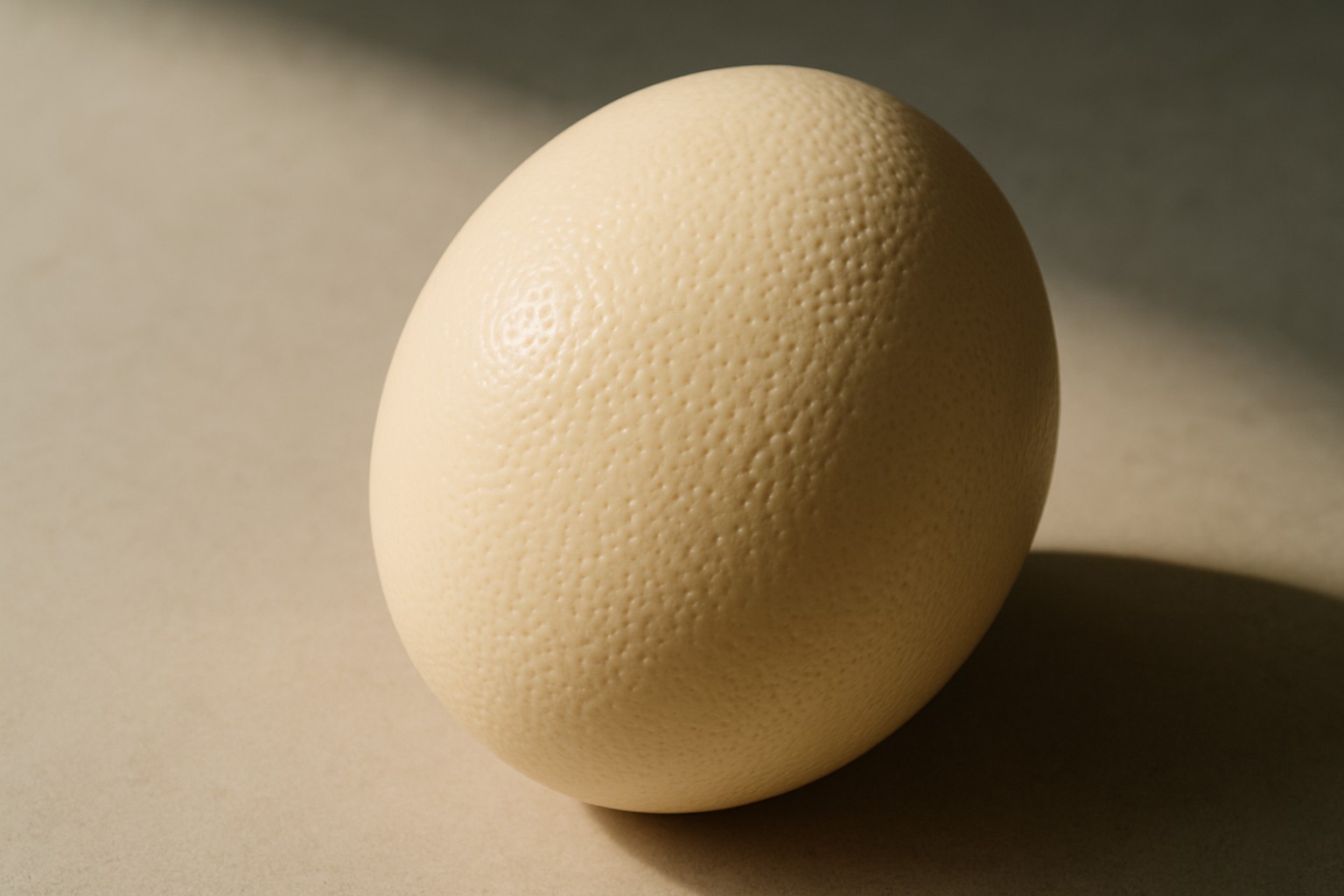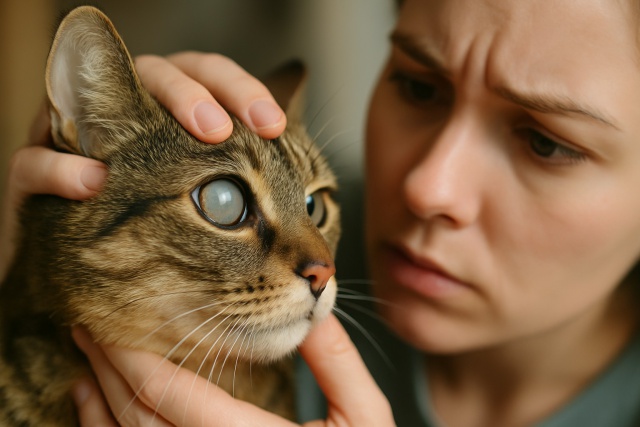What Causes a Cat's Eye to Look Cloudy and How to Help
A cloudy eye in cats can signal various health issues. Learn the causes, diagnostic steps, and treat...

The ostrich egg shell isn't just the largest bird egg out there—it's surprisingly tough. Weighing around 1.4 kilograms (3 pounds) and stretching up to 18 centimeters long, these eggshells can take a serious amount of pressure without cracking. They perform way better than eggs similar or smaller in size. We are going to dig into the nitty-gritty of the ostrich eggshell’s structure and unravel how its unique layers and materials team up to create a nearly unbreakable fortress.
Ostrich eggs hold the title for the largest bird eggs on Earth and are absolutely vital to the ostrich's reproductive cycle. Beyond their biological significance, these eggs also pack a punch culturally in many societies and serve an important role in the delicate ecosystems where ostriches roam freely.
The ostrich eggshell really earns its stripes with an impressive thickness and a nicely layered structure. Clocking in at about 2 millimeters thick, it sports a tough outer protective layer paired with inner membranes that team up to shield the growing chick while cleverly handling gas exchange.
The shell is mostly made up of calcium carbonate crystals nestled within an organic protein matrix. This matrix isn’t just along for the ride—it adds serious strength while steering how the crystals form, teaming up to build a sturdy and long-lasting structure.
| Component | Ostrich Eggshell | Chicken Eggshell | Quail Eggshell |
|---|---|---|---|
| Thickness | Roughly 2.0 mm, quite hefty compared to the others | Sits comfortably between 0.3 and 0.4 mm, not too shabby | Around 0.2 mm, pretty slender overall |
| Mineral Content | About 97% Calcium Carbonate, making it the heavyweight in this category | Comes in at around 94% Calcium Carbonate, holding its own nicely | Close to 93% Calcium Carbonate, just a tad lighter on minerals |
| Organic Matrix Content | Around 3%, mostly proteins and polysaccharides doing their thing | About 6%, with proteins taking center stage | Roughly 7%, mainly proteins, giving it a bit more organic flair |
| Mechanical Strength | Really tough stuff here, compressive strength hitting a solid 200 MPa | Moderate strength, usually cruising between 30 and 40 MPa | On the softer side, generally between 15 and 25 MPa, but still no pushovers |
| Porosity | Low porosity thanks to a tightly packed crystal structure, making it pretty durable | Higher porosity that cleverly aids in gas exchange | Moderate porosity, striking a balance that works well enough |
The ostrich eggshell cleverly brings together several structural features that team up to deliver some seriously impressive mechanical strength. Its layered microstructure works to spread external pressure nice and evenly, while the intricate protein matrices play the important role of stopping cracks right in their tracks.
"The ostrich eggshell is a fascinating example of nature's knack for fine-tuning materials, offering both sturdy protection and clever practicality. Its design hits that sweet spot between hardness and toughness—a balance that is still inspiring materials science and engineering breakthroughs today, believe it or not." – Dr. Laura Jensen, Materials Scientist
Researchers have carried out a variety of careful tests including compression and impact experiments to truly get a handle on just how tough the ostrich eggshell is. Time and again, the results reveal it can withstand pressures way beyond what eggs of similar or even smaller sizes can take.

Compression testing on an ostrich eggshell to measure its strength and resistance to breaking.
Ostrich eggs face quite the gauntlet, from predators looking for an easy snack to the harsh twists of Mother Nature. Their shells aren’t just for show. They are marvels of natural engineering, tough enough to bear the weight of patient parent birds perched on top. They protect against sudden jostles in the nest and stand tall against swings in temperature and humidity.
Material scientists and engineers often look to ostrich eggshells for inspiration when crafting materials that must be stronger, lighter and more durable. The eggshell’s curious blend of toughness and flexibility offers a surprisingly handy model.
The ostrich egg shell is incredibly tough but it isn’t exactly bulletproof against human hands, nor is it completely indestructible no matter the situation.
26 posts written
Beatrice bridges the gap between human behavior and sustainability through compelling narratives that inspire action.
Read Articles
A cloudy eye in cats can signal various health issues. Learn the causes, diagnostic steps, and treat...

Discover the weird stuffed animal trends transforming toy shelves—from hybrid creatures to interacti...

Discover expert techniques to preserve a dead dragonfly without damaging its delicate wings. From ha...

Curious about how long ants live without food? Discover the fascinating biology, survival strategies...
